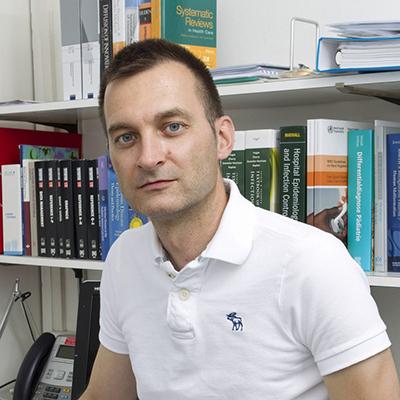Thursday 26 September 15:00 - 16:00
Background
Healthcare facilities are considered hotspots for the development and spread of antimicrobial resistance (AMR).1 The ECDC identified multidrug-resistant bacteria as a leading cause of the estimated 8.9 million healthcare-associated infections that occur every year in hospitals and long-term care facilities in the EU/EEA.2
The misuse and overuse of antibiotics is dangerously accelerating the emergence of AMR. One in three patients admitted in European acute care hospitals are prescribed at least one antimicrobial.3 According to the OECD, up to 50% of antimicrobials used in human healthcare may be inappropriate.4
Furthermore, drug-resistant bacteria can easily spread between patients within healthcare facilities and to the wider community.5 Basic measures such as contact precautions, hand washing, and proper cleaning can play a significant role in controlling and preventing infections that would otherwise require further treatment.6
From antibiotic stewardship and infection prevention and control measures, to wastewater treatment and procurement practices, healthcare facilities have a vast range of tools at their disposal to combat AMR. It remains clear, however, that if no effective action is taken, AMR will increasingly damage public health and place a greater burden upon already strained healthcare budgets.7
This webinar will present the results of a recent survey conducted by Health Care Without Harm (HCWH) Europe to identify best practice to tackle AMR in healthcare facilities across Europe. The subsequent report sets out recommendations to help Europe’s healthcare sector mitigate its contribution to AMR.
This webinar aims to:
- Raise awareness about the contribution of Europe’s healthcare sector to the emergence of antimicrobial resistance
- Highlight and share best practice among healthcare facilities on how to address the development and spread of drug-resistant bacteria
- Discuss and identify further room for action to help keep antibiotics effective in the treatment of bacterial infections
Speakers
Ana Paula Coutinho Rehse, Technical Officer - World Health Organization Regional Office for Europe

Walter Zingg, Senior Physician, Infection Control Programme - University of Geneva Hospitals

Thomas Møller, Environmental Coordinator - Aarhus University Hospital

Jean-Yves Stenuick, Pharmaceuticals Policy & Projects Officer - Health Care Without Harm (HCWH) Europe

[1] Hocquet, D. et al. (2016) What happens in hospitals does not stay in hospitals: Antibiotic-resistant bacteria in hospital wastewater systems, in The Journal of Hospital Infection, Volume 93, Issue 4, pp. 395-402. www.journalofhospitalinfection.com/article/S0195-6701(16)00064-5/fulltext
[2] Suetens, C. et al. (2018) Prevalence of healthcare-associated infections, estimated incidence and composite antimicrobial resistance index in acute care hospitals and long-term care facilities: Results from two European point prevalence surveys, 2016 to 2017, in Eurosurveillance, Volume 23, Issue 46. www.eurosurveillance.org/content/10.2807/1560-7917.ES.2018.23.46.1800516
[3] ECDC. (2015) What are European hospitals like? https://ecdc.europa.eu/en/publications-data/what-are-european-hospitals
[4] OECD. (2016) Antimicrobial resistance: Policy insights. www.oecd.org/health/health-systems/AMR-Policy-Insights-November2016.pdf
[5] Uchil, R. et al. (2014) Strategies to combat antimicrobial resistance, in The Journal of Clinical and Diagnostic Research, Volume 8, Issue 7. www.ncbi.nlm.nih.gov/pmc/articles/PMC4149102
[6] ReAct. (2018) Infection prevention and control in the clinic. www.youtube.com/watch?v=tIZ9jU83Olg
[7] OECD. (2018) Stemming the superbug tide: Just a few dollars more. www.oecd.org/health/stemming-the-superbug-tide-9789264307599-en.htm
Event Details
Region
Europe
